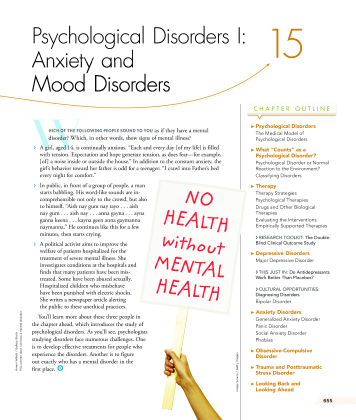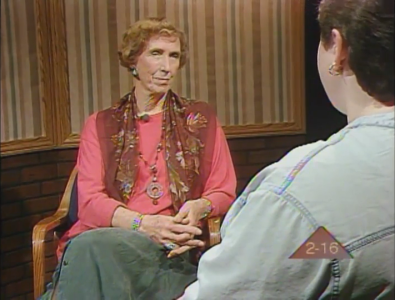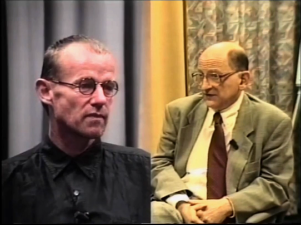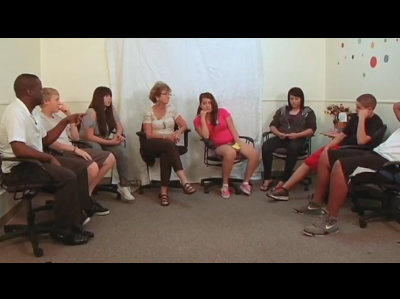Chapter 15. Psychological Disorders I: Anxiety and Mood Disorders
Introduction


Psychological Disorders I:
Anxiety and Mood Disorders
15.1 Slide 2
Welcome to your Try This! experience for Chapter 15.
As you learned when reading the opening sections of the chapter, there are different types of therapy strategies, that is, different approaches to reducing psychological distress and improving mental health. In this Try This! experience, you will view video clips of four therapy sessions illustrating four types of psychological therapies. Recall that psychological therapies are ones in which personal interactions between a therapist and one or more clients are designed to improve clients’ well-being. The video clips you will see are genuine therapeutic interactions featuring real clients and highly skilled therapists.
Try This! will test your understanding of the different psychological therapy strategies you have read about in the chapter. After you view each video clip, we will ask if you can identify the strategy being used by the given therapist.
15.2 Slide 3
15.3 Slide 4
 Which of the following four therapy strategies do you think was illustrated in this video clip?
Which of the following four therapy strategies do you think was illustrated in this video clip?
Why do you think the therapy shown here is an example of therapy?
What do you think may be a unique advantage of therapy?
15.4 Slide 5
15.5 Slide 6
 Which of the following four therapy strategies do you think was illustrated in this video clip?
Which of the following four therapy strategies do you think was illustrated in this video clip?
Why do you think the therapy shown here is an example of therapy?
What do you think may be a unique advantage of therapy?
15.6 Slide 7
15.7 Slide 8
 Which of the following four therapy strategies do you think was illustrated in this video clip?
Which of the following four therapy strategies do you think was illustrated in this video clip?
Why do you think the therapy shown here is an example of therapy?
What do you think may be a unique advantage of therapy?
15.8 Slide 9
15.9 Slide 10
 Which of the following four therapy strategies do you think was illustrated in this video clip?
Which of the following four therapy strategies do you think was illustrated in this video clip?
Why do you think the therapy shown here is an example of therapy?
What do you think may be a unique advantage of therapy?
15.10 Slide 11
How did you do? Let’s find out:
Clip #1: Humanistic therapy

The first video clip illustrated humanistic therapy. Note how the therapist used the technique of reflection (an active listening technique in which the therapist recurringly summarizes statements made by the client) as a way of building a relationship with the client. This technique, which conveys an empathic understanding of the client’s own view of his or her life circumstances, is a hallmark of humanistic therapy.
You got this right!
(You said: therapy)
Clip #2: Cognitive therapy

The second clip was an example of cognitive therapy. In cognitive therapy, therapists try to teach people about the nature of their own thinking. In particular, they emphasize ways in which clients’ own thoughts – their interpretations of events and expectations about the future -- can create personal distress. Cognitive therapists analyze the ways in which clients interpret events and try to teach clients new ways of thinking, as illustrated by the therapist in the second video clip.
You got this right!
(You said: therapy)
15.11 Slide 12
How did you do? Let’s find out:
Clip #3: Psychoanalytic or psychodynamic therapy

The third clip displayed a psychodynamic therapy strategy. Psychodynamic therapists recognize that a problem described by a client might not be the client’s most significant problem; there might be a “deeper” problem of which the client is not even fully aware. Psychodynamic therapists also attend closely to the relationship between the client and therapist, knowing that clients may “transfer,” onto therapists, thoughts and emotions they experience when interacting with significant figures in their everyday lives. Both aspects of psychodynamic therapy can be seen in the third video clip.
You got this right!
(You said: therapy)
Clip #4: Group Therapy

The fourth video clip was an example of group therapy; it was a group counseling session for adolescents (as you probably guessed from the presence of a group people in the video). In group therapy, clients benefit not only from interactions with the therapist, but from interactions with each other. Recall how, in the fourth video clip, members of the group provided helpful feedback to one another as they discussed life problems.
You got this right!
(You said: therapy)
15.12 Slide 13
When you return to the chapter, you will read about how these therapy strategies – and others – are put into action. Psychologists employ these strategies as they try to reduce the distress caused by a wide range of psychological disorders. In Chapter 15, you will learn about disorders involving prolonged depression, anxiety, and psychological stress.
The video clips on which this activity is based are provided courtesy of Psychotherapy.net:
Person-Centered Expressive Arts Therapy
Depression: A Cognitive Therapy Approach by Arthur Freeman
Psychotherapy by Otto Kernberg
Group Counseling with Adolescents: A Multicultural Approach